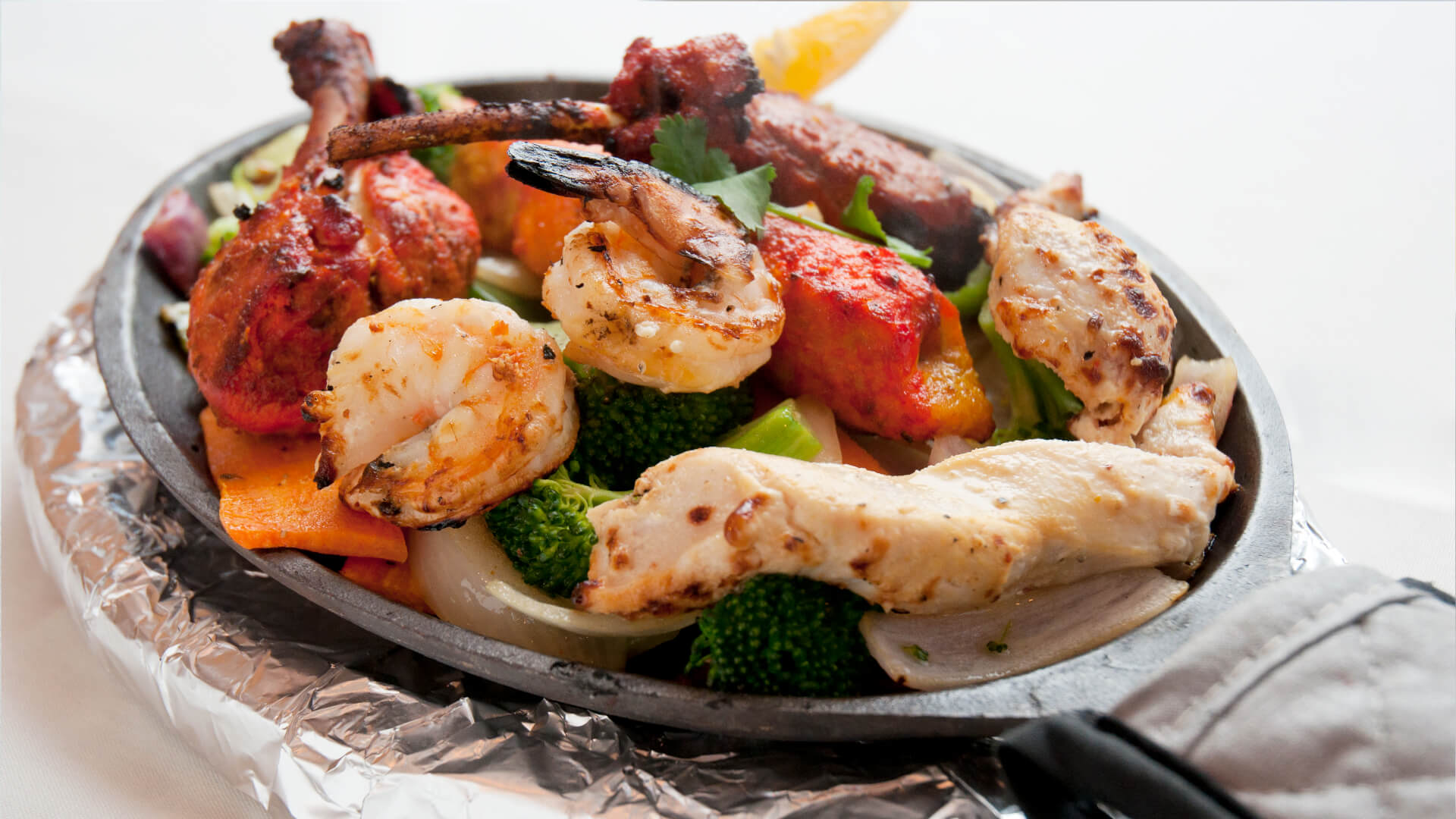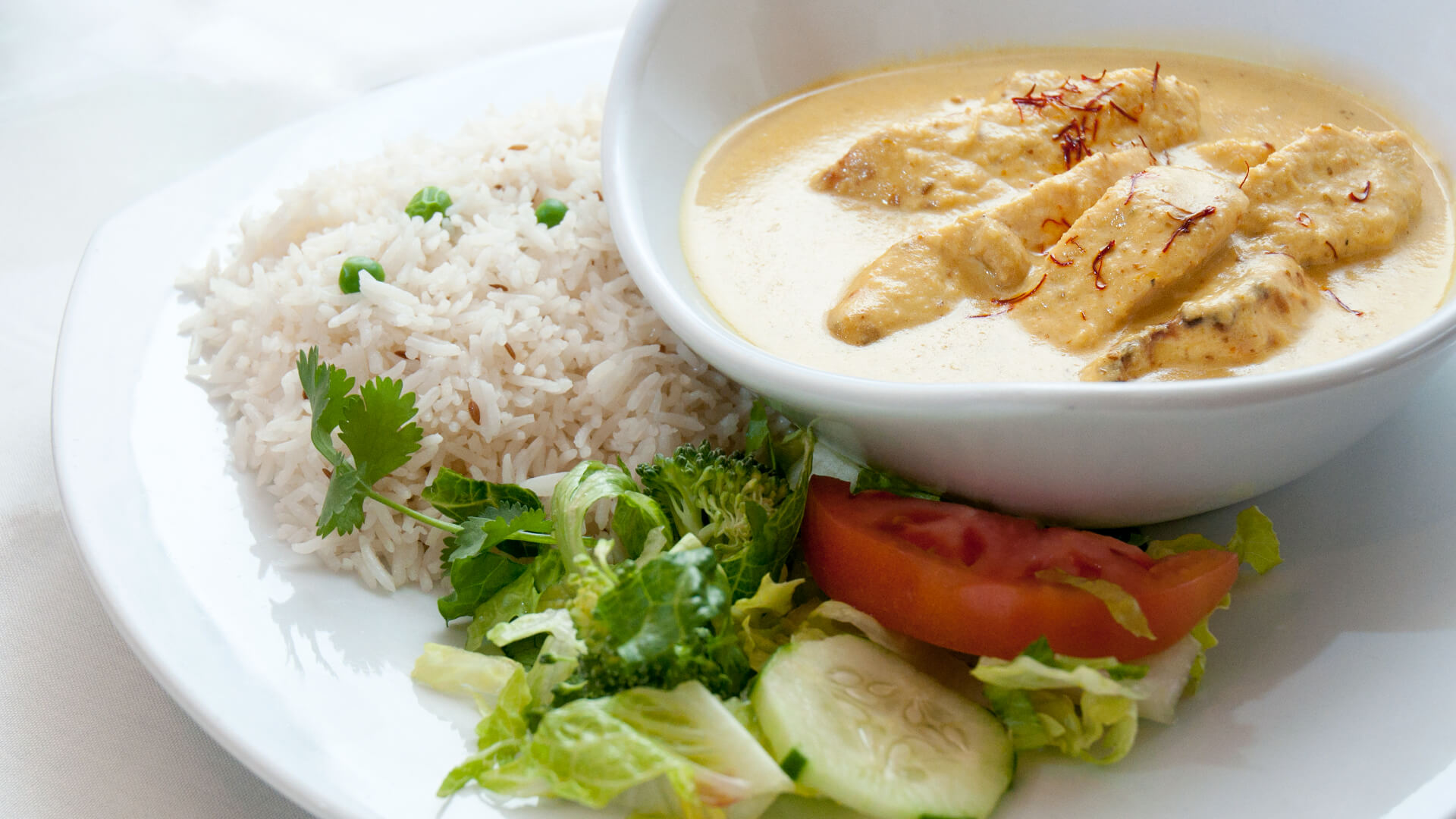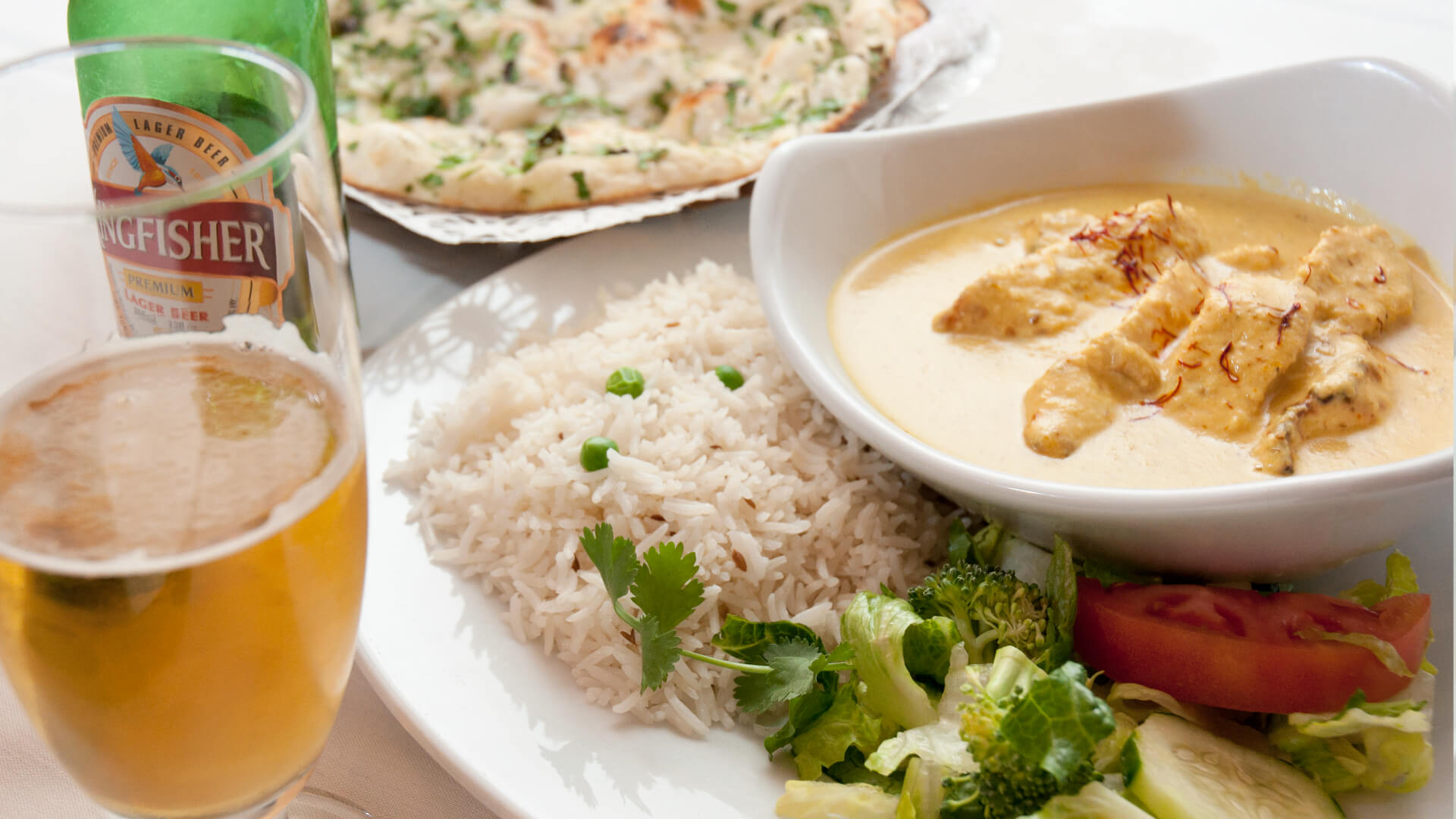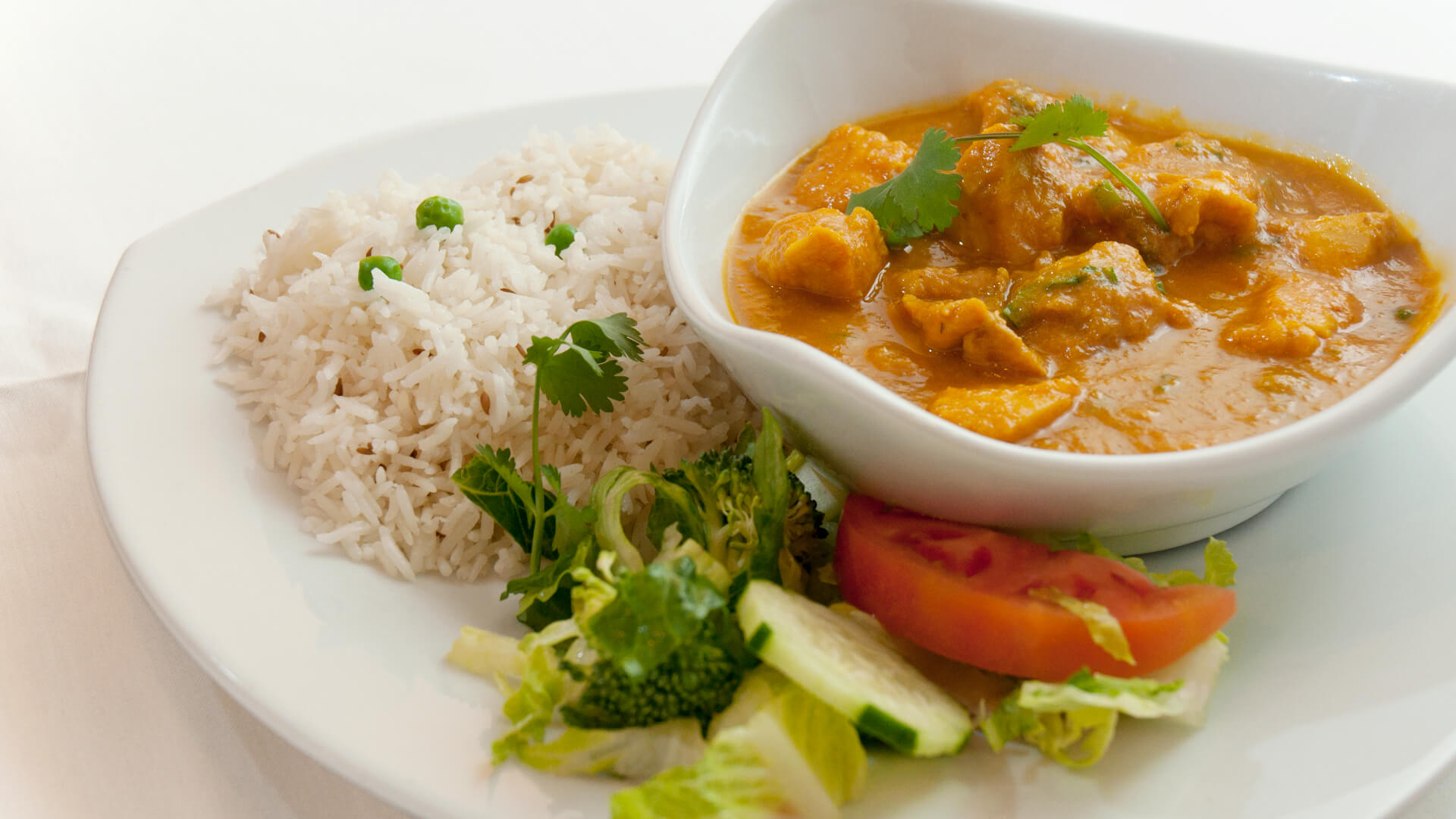Who We Are

Indian cuisine is distinguished by its sophisticated use of spices and herbs and the influence of the longstanding and widespread practice of vegetarianism in Indian society.Indian cuisine is the general term for the wide variety of cooking styles from India. In reality, India hosts an even greater number of distinct regional cuisines than the entire European continent.
Indian food is almost always prepared with fresh ingredients along with delicate mixtures of many different fresh and dried spices and the exact recipes often vary greatly from one household to the next.
Food is an integral part of India’s culture, with cuisines differing according to community, region, and state. Indian cuisine is characterized by a great variety of foods, spices, and cooking techniques. Furthermore, each religion, region, and caste has left its own influence on Indian food.
Many recipes first emerged when Vedic Hindus predominantly inhabited India. Later, Mughals, Christians, British, Buddhists, Portuguese, and others had their influence. Vegetarianism came to prominence during the rule of Ashoka, one of the greatest of Indian rulers who was a promoter of Buddhism. In India, food, culture, relition, and regional festivals are all closely related.
The staples of Indian cuisine are rice, atta (whole wheat flour), and at least five dozen varieties of pulses, the most important of which are chana (Bengal gram), toor (pigeon pea or red gram), urad (black gram) and mung (green gram).
Chana is used in different forms, may be whole or processed in a mill that removes the skin, e.g. dhuli moong or dhuli urad, and is sometimes mixed with rice and khichri (a food that is excellent for digestion and similar to the chickpea, but smaller and more flavorful). Pulses are used almost exclusively in the form of dal, except chana which is often cooked whole for breakfast and is processed into flour (besan).
The most important spices in Indian cuisine are chili pepper, black mustard seed (rai), cumin (jeera), turmeric, fenugreek, ginger, coriander and asafoetida (hing). Another very important spice is garam masala, which is usually a powder of five or more dried spices, and is commonly comprised of cardamom, cinnamon, and clove.
Some leaves are commonly used, like bay leaf, coriander leaf and mint leaf. The common use of curry leaves is typical of South Indian cuisine. In sweet dishes, cardamom, cinnamon, nutmeg, saffron, and rose petal essence are used. In Indian cuisine, curry refers not to a spice, but to any dish eaten with rice, or more commonly, any dish with a gravy base. Indian spices are often heated in a pan with oil to intensify the flavor before adding other ingredients.
Curry Phenomenon: Simple dry powders, such as red chili powder and curry powder, often replace in Western countries, such as Great Britain and the United States, the complex formulations of fresh and dried spices.
The word Curry comes from the Tamil kari (type of thick sauce).
North Indian cuisine is distinguished by the higher proportion-wise use of dairy products; milk, paneer (cottage cheese), ghee (clarified butter), and yoghurt are all common ingredients. North Indian gravies are typically dairy-based and employ thickening agents such as cashew or poppy seed paste. Other common ingredients include chilies, saffrom, and nuts.




South Indian cuisine is distinguished by a greater emphasis on rice as the staple grain, the liberal use of coconut and curry leaves, particularly coconut oil, and the ubiquity of sambar and rasam (also called saaru) at meals. South Indian cooking is even more vegetarian-friendly than North Indian cooking.
North Indian cooking features the use of the tandoor, a large and cylindrical coal-fired oven, for baking breads such as naan and khakhra; main courses like tandoori chicken also cook in it. Another important feature of North Indian cuisine are flat breads. These come in many different forms, such as naan, paratha, roti, puri, bhatoora, and kulcha.
The samosa is a typical north Indian snack. These days it is common to get it in other parts of India as well. The most common (and authentic) samosa is filled with boiled, fried, and mashed potato, although it is possible to find other fillings. The dosa, idli, vada, bonda, and bajji are typical South Indian snacks.
Hot/Spice Factor: Indian food is usually perceived as ‘spicy’ or ‘hot’. While some of that is true, most Indian foods are not necessarily ‘spicy’ or ‘hot’. Chili peppers similar to cayenne chili peppers, commonly referred to as “chili(es)” in Indian cookbooks and lexicon, is the common culprit for making the dishes fiery hot.
If you do not prefer the heat, stay away from any dishes that contain liberal use of chilies or tone down the chili amount to suit your taste. The other ingredient to be careful with is peppercorn, most commonly referred to as “pepper” in the Indian recipes and cookbooks. Cloves and cinnamon also increase the heat.
Indian cuisine is a combination of wonderful and subtle flavors. They vary as much as the climates and languages of India, and are as exotic as the people of India.
India is a country with about eighteen different languages and sixteen hundred plus dialects, so food varies vastly from region to region. Our humble attempt is to bring you the most popular dishes from the north western states of India. We have carefully selected dishes from other popular cooking styles or regions of India with a hope you would enjoy them to the fullest. With our most recent menu we have also made an attempt to introduce some contemporary style Indian dishes.
On our menu each dish will have its own distinctive flavor and aroma, and most of our dishes can be prepared to your desired level of spice choice. The flavors we offer come from masterful blend of mixing fresh ground spices on our premises, and traditional sauce making techniques. The blending and preparation of spices is an ancient art and is indispensable to Indian cuisine. The result is delightful flavors, those which cannot be attained by the use of “Curry Powder”.
We do hope you will have a great dining experience and should you need any further assistance or help with wine pairings for your food, please feel free to ask.
Thank you for your patronage,
The Staff and Management of Cinnamon Kitchen

